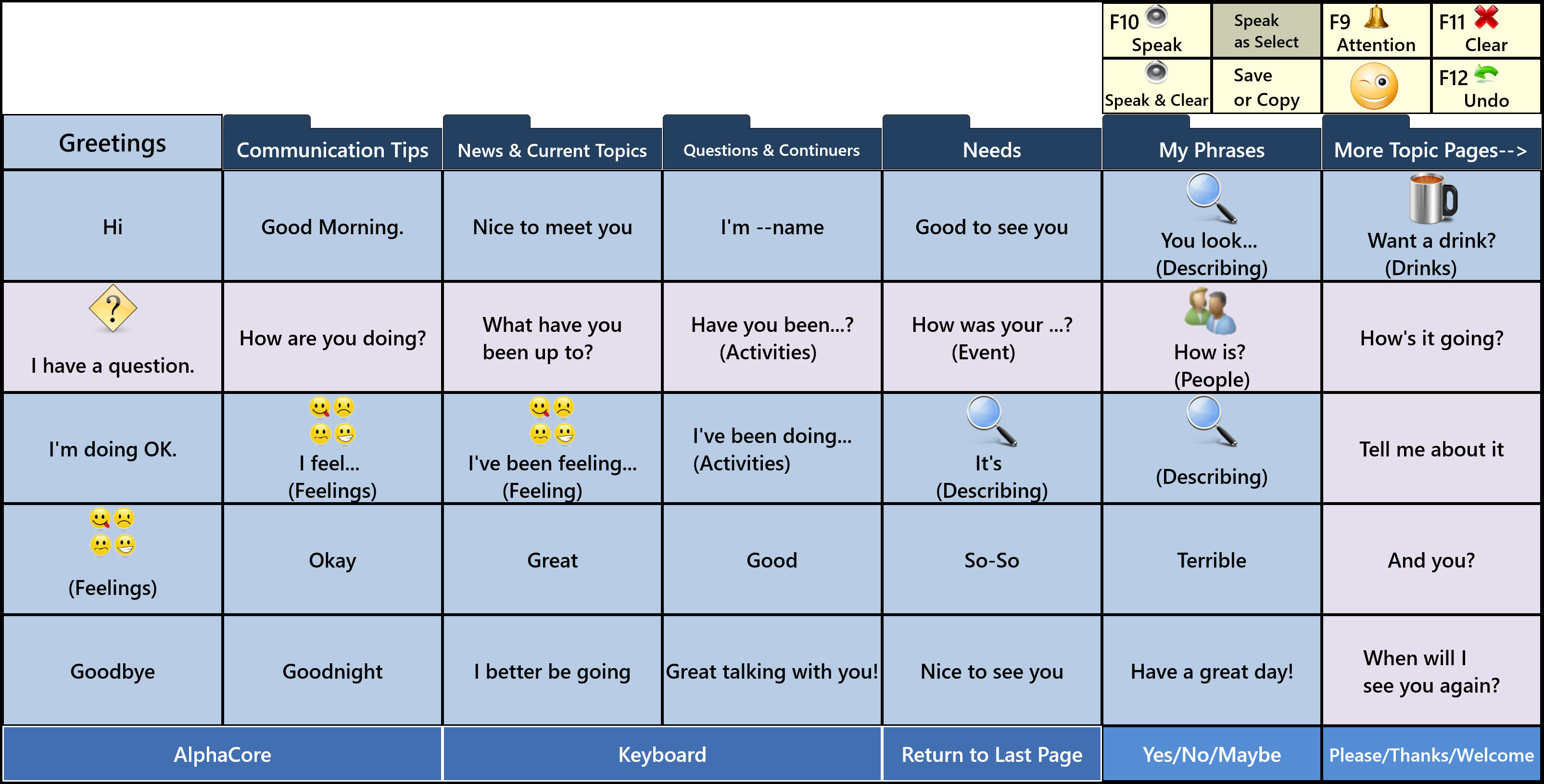Introducing AlphaCore, a premium “text-to-speech” communication app for literate, non-verbal people like those with ALS/MND.

AlphaCore was developed by Amy Roman, a speech pathologist who has specialized in meeting the communication needs of patients with ALS since 2000.
AlphaCore provides features which maximize efficiency and communication rate for people with normal, limited or no hand movement. It incorporates strategies developed through research, but perhaps more importantly, those inspired by the day-to-day experiences and feedback of patients and caregivers. Four layouts enable users, with a wide range of physical abilities, to choose a keyboard that optimizes their communication.
AlphaCore is easy to use and customize. There is no “edit mode” or complicated steps involved to add your own phrases. Just press “Save to Button”.
To ultimately personalize your system AlphaCore provides a one-step download of your recorded messages from MessageBanking.com and automatically populates each recording to its corresponding message button.
Speech Therapists and AT Specialists can obtain a free Demonstration Copy of AlphaCore by contacting Amy@AmyandpALS.com
Become proficient with AlphaCore in under 45 minutes with these videos.
AlphaCore Benefits
Quick and Easy Communication
- Rapid sentence building through use of a high frequency core vocabulary, (a small set of high-usage words that account for about 75% of the words we say).
- Maximized communication speed using well organized conversation pages containing common messages and recurring topics.
- Telephone communication pages that assist in a variety of common phone interaction scenarios.
- Call chimes to alert caregivers of a need or let friends know that you are ready with a message.
- A page of stored messages that educate communication partners how to better communicate with an AAC user.
- Quick and easy personalization of messages.
Accessibility
- Supports a wide-range of access methods including mouse, touchscreen, eye tracker, trackball, joystick, touch-pad, and head tracker.
- Four layouts designed to meet the needs of individuals with a wide range of physical and visual abilities and to ease transitions if new access methods are required over time.

